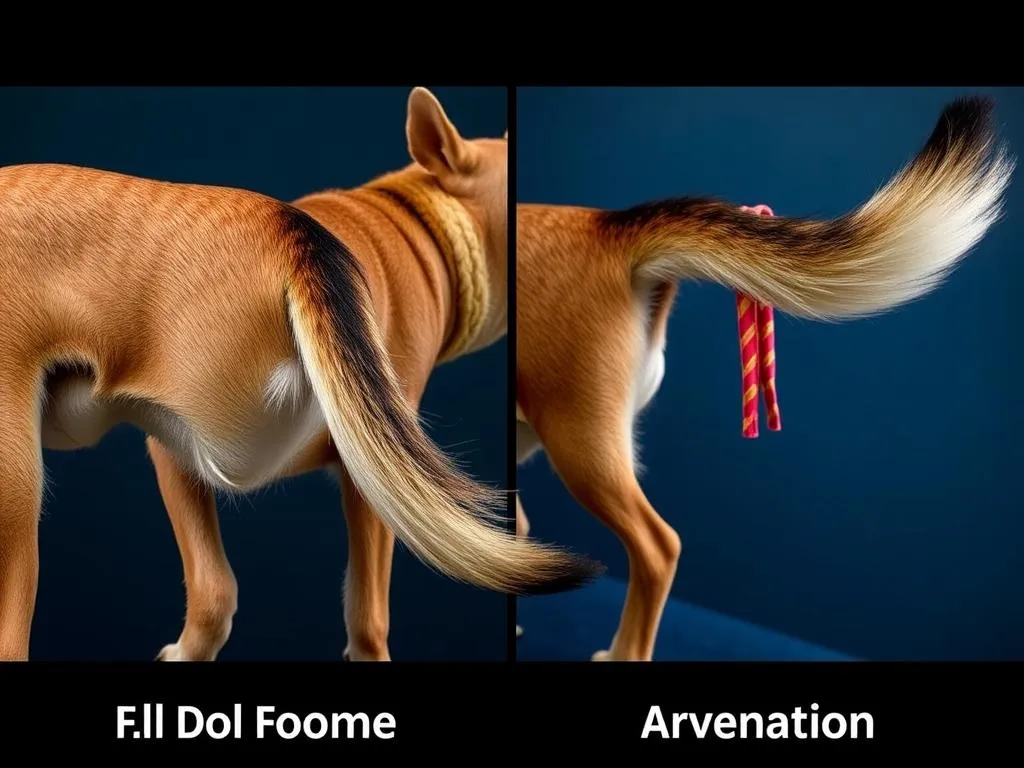
Dog health care is a vital aspect of responsible pet ownership, ensuring that our furry friends lead healthy, happy lives. One important and often contentious topic in this field is the difference between tail docking and tail amputation. While both procedures involve surgical alteration of a dog’s tail, their intentions, methods, and implications vary greatly. Understanding these differences is essential for pet owners, as they navigate the complexities of canine health and welfare.
In this article, we will delve into the definitions of tail docking and tail amputation, explore the reasons behind each procedure, and compare their health implications, ethical considerations, and recovery processes. This comprehensive look will help dog owners make informed decisions about their pets’ healthcare.
Understanding Tail Docking
Definition of Tail Docking
Tail docking refers to the surgical removal of a portion of a dog’s tail, typically performed when the dog is very young. This practice has deep historical roots, originating from various cultural traditions and practical needs. Historically, tail docking was believed to prevent injuries in working dogs, particularly those used for herding or hunting. Today, the motivations for tail docking can be a blend of tradition, aesthetics, and perceived health benefits.
Common Breeds That Undergo Tail Docking
Certain dog breeds are more commonly subjected to tail docking due to breed standards or historical practices. Some of these breeds include:
- Doberman Pinschers
- Rottweilers
- Boxers
- Yorkshire Terriers
- Great Danes
Breed-specific standards often dictate whether a dog should be docked, with some kennel clubs requiring it for show eligibility. However, these practices are increasingly scrutinized as more owners advocate for the natural appearance of dogs.
Reasons for Tail Docking
The motivations behind tail docking can vary significantly. Traditionally, proponents argue that tail docking serves several purposes:
- Working Dog Performance: Advocates claim that docking prevents injuries to working dogs. For example, herding dogs might be less likely to suffer tail injuries while navigating through dense brush.
- Aesthetic Preferences: Some breeds have historically been docked to conform to specific appearance ideals, which can influence breeding practices.
- Perceived Health Benefits: Some argue that docking can prevent certain health issues, although evidence supporting these claims is limited.
The legal status of tail docking varies by country; some nations have strict regulations or outright bans on the practice, reflecting changing attitudes toward animal welfare.
The Procedure of Tail Docking
Tail docking is typically performed on puppies between 3 to 5 days old, often without anesthesia, as their nervous systems are less developed. The procedure involves cutting off a portion of the tail using surgical scissors or a clamp. Recovery is generally swift, with puppies often returning to normal activity shortly after the procedure. Post-operative care involves monitoring the surgical site for infection and ensuring the puppy remains comfortable.
Understanding Tail Amputation
Definition of Tail Amputation
Tail amputation is a more extensive surgical procedure that involves the complete removal of a dog’s tail. This procedure is typically performed for medical reasons rather than cosmetic or traditional preferences. Understanding the distinction between tail docking and tail amputation is crucial, as the latter is often a response to specific health conditions.
Indications for Tail Amputation
Tail amputation may be indicated in various situations, including:
- Injuries: Traumatic injuries to the tail, such as fractures or severe lacerations, may necessitate amputation to alleviate pain and prevent further complications.
- Infections: Chronic infections or conditions affecting the tail, such as severe dermatitis, can lead to the need for amputation.
- Tumors: Growths or tumors located on the tail can also warrant surgical removal for health and safety reasons.
In these cases, the amputation is considered a necessary medical intervention to improve the dog’s quality of life.
The Procedure of Tail Amputation
Tail amputation is performed under general anesthesia to ensure the dog is pain-free during the procedure. The surgeon removes the tail at the appropriate point, taking care to avoid damage to surrounding tissues. The recovery process is more involved than tail docking, as the surgical site will require careful monitoring. Post-operative care may include pain management, wound care, and limiting activity to ensure proper healing.
Comparing Tail Docking and Tail Amputation
Reasons for Each Procedure
The reasons for tail docking and tail amputation are fundamentally different. Tail docking is often rooted in tradition and aesthetics, while tail amputation is driven by medical necessity. This distinction is essential for owners to recognize when considering their pet’s health and well-being.
Health Implications
The health implications of both procedures can vary significantly:
-
Tail Docking: Critics argue that tail docking can lead to various complications, including phantom pain, behavioral issues, and an increased risk of certain health problems. Additionally, the procedure is often performed without anesthesia in young puppies, raising concerns about pain and suffering.
-
Tail Amputation: While this procedure is performed for health reasons, it can also carry risks, such as infection and complications from anesthesia. However, when necessary, tail amputation can significantly improve a dog’s quality of life by addressing painful or debilitating conditions.
Legal and Ethical Considerations
The legal landscape surrounding tail docking varies widely. In countries like the UK and Australia, tail docking is heavily regulated or banned altogether, reflecting a growing concern for animal welfare. Ethical debates often revolve around the necessity and morality of docking versus the medical justification for amputation.
Veterinary professionals play a crucial role in guiding pet owners through these decisions, ensuring that the welfare of the animal is the top priority. Engaging in open discussions about the implications of each procedure can lead to more informed choices.
Owner Considerations
Making an Informed Decision
When considering tail docking or tail amputation, pet owners should weigh several factors, including:
- The dog’s breed and its associated standards
- The potential health risks and benefits of each procedure
- The necessity of the procedure based on the dog’s individual health status
Consulting with a veterinarian is vital for making an informed decision, as they can provide personalized advice tailored to the dog’s needs.
Alternatives to Tail Docking
There are non-invasive alternatives to tail docking that can address behavioral or aesthetic concerns. Training and socialization can often mitigate issues related to tail behavior, and many owners are discovering the benefits of allowing dogs to retain their natural tails. Educating oneself on the advantages of an intact tail can foster a deeper appreciation for canine anatomy and behavior.
Post-Procedure Care and Support
Regardless of whether a dog undergoes tail docking or amputation, proper post-procedure care is essential. Owners should monitor the surgical site for signs of infection, such as swelling or discharge. It’s also important to provide a comfortable environment during recovery and to follow any veterinary recommendations.
Signs of complications may include excessive bleeding, persistent pain, or refusal to eat. Prompt veterinary attention is crucial if any of these signs arise.
Conclusion
The distinction between tail docking and tail amputation is significant in the realm of dog health care. Understanding the motivations, procedures, and implications of each can empower pet owners to make informed decisions regarding their pets’ health and well-being.
As the conversation around animal welfare evolves, prioritizing a dog’s health and quality of life should remain at the forefront of all decisions. Owners are encouraged to consult with veterinary professionals and consider the broader ethical implications of these procedures, fostering a responsible approach to pet ownership.
By emphasizing the importance of informed decision-making and advocating for the welfare of our canine companions, we can ensure that our dogs lead fulfilling lives, regardless of whether their tails are docked or intact.









